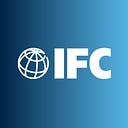by Carmen Valéria de Paula
Anyone anywhere in the world can tell you how digital technology has revolutionized the way we all live: We shop online, drive with GPS, chat on social media. The digital transformation is especially critical to the way we manage and treat the planet’s illnesses, and with more than 665 million people living in Latin America and the Caribbean, the challenge here is no less acute.
In our collective drive to digitalize, we learned a lot during the Covid-19 pandemic. We saw how digital tools can be used to track the virus’s spread, monitor symptoms, share data and spread life-saving medical information. Yet the sense of urgency the pandemic fostered also drove many in both the public and private sectors to grasp at digital fixes in a hasty and uncoordinated way, and that is not the right way.
Make no mistake: The healthcare industry’s digital transformation is not just a destination; it is a journey.
New digital technology moves fast — artificial intelligence! machine learning! blockchain! — while so much of the healthcare industry, from hospitals to clinics, are still mired in analog practices, from filling up patient intake forms to prescription refills. The task is as daunting as the opportunity is vast.
A true transformation involves more than just replacing existing analog practices with newer digital clicks and swipes, or merely swapping paper for pixels. It requires a well-defined long-term strategy, careful alignment with each organization’s own goals, and committed execution by the people involved. According to the Boston Consulting Group, 70 percent of digital transformations fail to meet their stated objectives. But when companies craft well-defined goals and are committed to adapting their culture, when stakeholders recognize the need for change and the opportunities it presents, the success rate improves markedly.
We understand this only too well here at the International Finance Corporation, which leverages the World Bank’s global resources, network of knowledge, and lessons learned from digitalization initiatives across emerging markets. It’s why we’re building on more than $1 billion in our global health investment portfolio and have launched two digital platforms focused on the health sectors, DigiHealth and DigiPharma, to help companies and administrators navigate this transformation.
While the approach necessarily varies from country to country, the goal is to strengthen healthcare systems and deliver cost-effective, quality care wherever they may be. Javier Contreras, CEO of the healthcare company Group Conclina in Ecuador, says that IFC experts from the DigiHealth team helped to identify technology solutions to improve the admission, discharge and billing of patients. These allowed his company to lower operating costs while making back-office functions more efficient. Cumbersome paper records were transferred onto digital files and made more accessible on a website, and instead of having to visit the hospital to obtain a copy of their records, patients can now use a web portal to retrieve imaging and lab results, check their billing history and access their medical records.
Working with healthcare and pharmaceutical companies in South Asia and Latin America has helped us identify four essential steps crucial to a digital transformation:
1. Baseline assessment: The first step involves taking a comprehensive look at digital maturity levels — not just within a company, but in a local and global context. The analysis identifies strengths and weaknesses, taking global trends into account and also includes market and regulatory reviews. It also considers how digital innovations and data analytics can add value to the company’s digital strategy.
2. Strategy development: With pharma companies, what are the clients’ priorities for digital growth, technology infrastructure and human resources? For healthcare, what are the patient, staff and technology needs and how ready is the existing IT infrastructure? We address these priorities and identify opportunities for innovative solutions guided by an underlying principle: Customers and patients must be able to access services and products how and when they want.
3. Implementation guidance: A key element of the digital journey is related to change management. A plan for implementing the strategy might include, for example, a review of the organizational structure and a framework for managing the change, to ensure employees and management embrace the digital direction and are invested in its success.
4. Financing support: As the largest global development institution focused on the private sector in emerging markets, we understand how digital technology can improve healthcare around the world. We’re committed to supporting this implementation with financing through equity or quasi-equity investments, loans, loan syndications, and tapping donor funds.
Already, big boosts in productivity have become evident, since faster and better collection of data from doctors and patients lets pharma companies align production with demand and reduce costs. Marco Billi, vice president of international business and innovation at Eurofarma in Brazil, who applied IFC’s DigiPharma tool, says digital data collection improved its ability to personalize the customer experience, and answers from doctors and patients lets the company’s sales team tailor the service they provide in real time.
With a well thought out strategy and approach, healthcare and pharma companies have a tremendous opportunity to use digitalization to boost revenues, lower costs, improve patient access, and raise the quality of care.
Carmen Valéria de Paula is IFC’s New Business Manager for Manufacturing, Agribusiness and Services in Latin America and the Caribbean.
